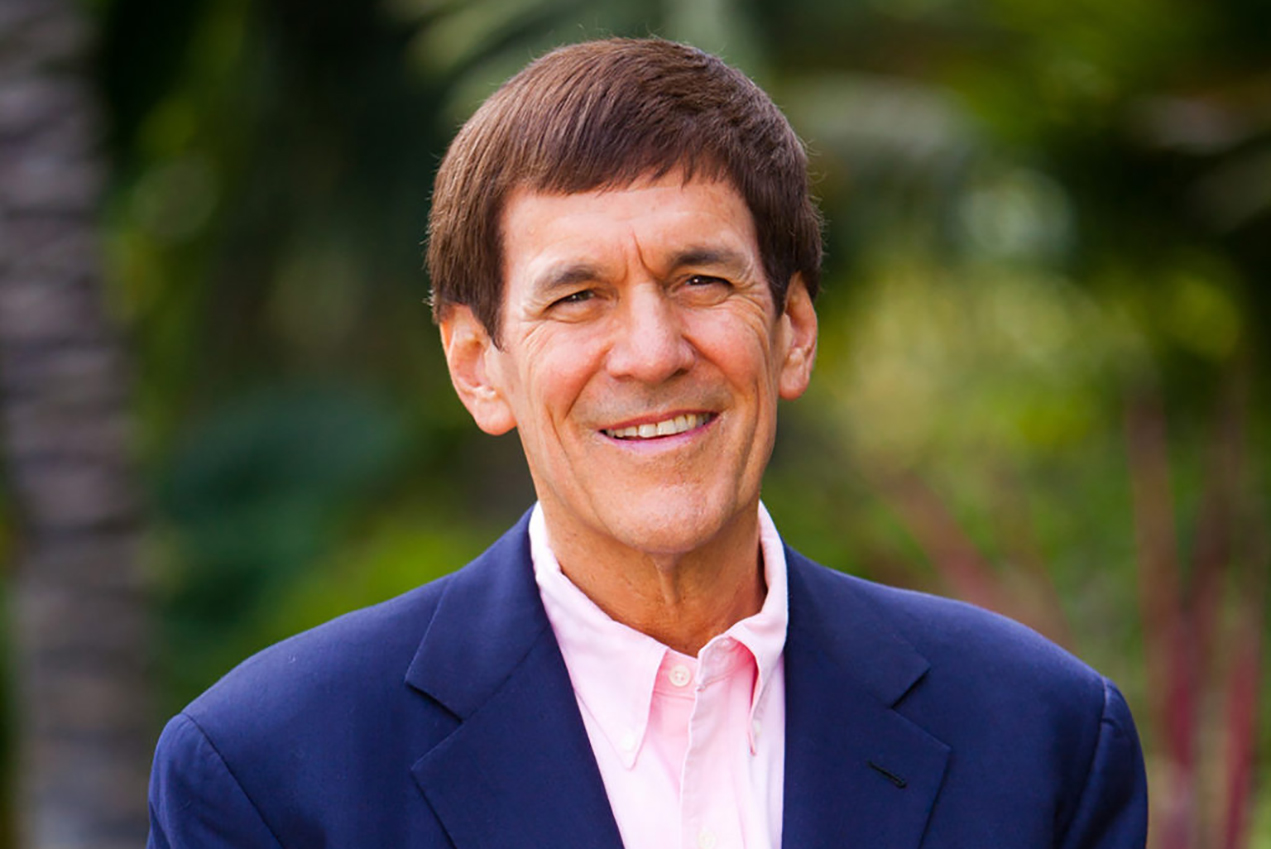Charles Manger III, MD, graduated from the Keck School of Medicine of USC’s ophthalmology program in 1980. He subsequently founded the Saddleback Eye Center in Laguna Hills, where he has performed approximately 89,000 LASIK surgeries since 1996. In 2007, Manger made a generous donation to the USC Roski Eye Institute to establish the Charles C. Manger III Endowed Chair in Corneal Laser Surgery, a chair currently held by the Department of Ophthalmology’s interim department chair, J. Martin Heur, MD, PhD.
To reflect on his ophthalmology career, Manger recently donated his time to share how the residency program prepared him for a successful career and impart wisdom on the next generation of ophthalmologists.
Can you tell us about your experience as a resident at the Keck School?
When I started training, Dr. Steve Ryan and Dr. Ron Smith had just arrived at USC to establish a full-time academic program. As a first-year resident, I remember the Tuesday Morning Resident Teaching Rounds were something to fear. Dr. Ryan would lead the rounds and he was a very serious, focused man. I’d spend two to three hours preparing myself for the next morning’s rounds, because he’d call on the residents at random to ask questions about the case. But what impacted me the most was the independence the program gave me to evaluate and treat a significant number of patients at the Los Angeles County/USC Hospital. Senior residents and staff were available to assist if I had a question, but the program gave us autonomy.
What was your most memorable experience of residency?
It was January 1, 1980. I was on call and asleep when an intern woke me to say a patient had arrived with retina symptoms and insisted that I see him. I examined the patient’s eye and found he had a retinal detachment. After making some calls, I arranged for the staff at the Eye Institute to fix his detachment the next morning. The patient became a neurologist and lives in Orange County and we have kept in touch since. My residency experience was so vital because it empowered me to make decisions regarding patient care.
Before you started residency, you went to Annapolis and served on a nuclear missile submarine. Did those experiences shape your approach to health care?
The common thread through those experiences is I learned you must find a purpose and then make a commitment. These places taught me that you must be willing to work every waking hour of most days to fulfill your goals. Eight hours a day and free weekends are not a given in these endeavors.
With those kinds of demands, what keeps you going?
When patients first meet with me, they have fear of the LASIK procedure. But my staff and I talk to them and let them know this is something I’ve been doing for 24 years. I tell them I’m going to do the surgery technically correct and it’s going to improve their vision. A few hours after the procedure, they can’t believe the difference. LASIK makes a truly positive change in their quality of life.
What advice would you give to our residents and alumni?
Consistent communication with patients and staff is key to an organized office environment. It is essential not to be absorbed with patient care to the exclusion of those relationships. In my practice, we have 15-minute staff rounds with the doctors and staff every workday. We talk about the day before, the correct way to handle given situations, how we may handle those situations better in the future, upcoming procedures, etc. The practice comes from the Navy, where rounds are held every morning when in port. Although the Navy was not the right career for me, it provided me with routines I apply to my practice to this day.
What advice would you give to residents who want to go into private practice?
If the business and entrepreneurship aspects of medicine are important to you, you must work hard and communicate continually with your staff, so you are consistent with procedures and instructions. You must stay involved from a distance and manage all aspects of your office operations, while also managing the clinical and surgical work on your patient.
What inspired you to make such a transformational gift to our department?
Before I was born, my grandfather, Charles Manger, was a Professor of Neurology at the USC Medical School [1911-1918]. I wanted to recognize both my grandfather’s work and that USC allowed me to pursue my dream of a career in medicine at 28 years old. My wife Carol and my daughter Laurie have degrees from USC. In appreciation of the opportunities that USC provided for our family, we wanted to help other people seeking a medical career.
At the chair installation for J. Martin Heur, Manger gave a guest lecture and was accompanied by his family. He said that, as a father, he has always stressed to his children that importance of getting a good education and pursuing the work that they love. His daughter Laurie Manger has a B.A. and master’s in strategic public relations from USC, and today works as the Director of Marketing and Public Relations at the Saddleback Eye Center. His older son Charles Manger IV has degrees from Claremont McKenna and George Washington universities, and has worked as a software engineer for more than 10 years. His younger son Joey Manger has a B.A. from Chapman University, and is a commercial airline pilot.
When Manger is not leading a busy practice, he enjoys gardening at both his office and home. He has a special interest in palms and cycads. In addition, he spends 30-60 minutes every day on physical training and stretching exercises.


